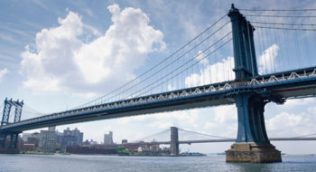

Originally from our sister publication, Advisor.ca.
When institutional asset managers want to smooth out volatility, one of the asset classes they turn to is global infrastructure.
But it’s important to understand the different classes of assets within infrastructure, and invest according to the growth prospects of the economy in which it operates, says Nick Langley, senior portfolio manager, RARE Infrastructure, and portfolio manager of the Renaissance Global Infrastructure Fund.
Langley says the sector can be broken down into two main categories: regulated assets and unregulated assets.
Regulated assets include power, gas and water delivery infrastructure, and are subject to periodic pricing resets as dictated by the regulator.
“The regulators tell those companies how much they can earn, and if they earn too much money, they have to give some back to their customers,” he explains. “If they are under-earning, and are a good company, they can increase their prices to bring their income up to the right level.”
These companies are less exposed to market cycles and are generally seen as defensive investments, due to the long-term exposure they provide to the underlying asset.
Examples of unregulated infrastructure include ports, toll roads and airports. Because these are concerned with moving goods about within the economy, they are far more exposed the market and economic cycles.
“Those are the sorts of companies you want to own coming out of a recession or economic downturn,” he says. “As you’re going into a downturn, you’re going to want to hold more of the utilities, the regulated infrastructure.”
Due to the presently uncertain nature of the global economy, he is tilting his portfolio toward utilities, and is steering clear of Eurozone as the fount of uncertainty.
“If you look at the UK and the U.S.—yes we’ve had some strengthening growth in the U.S., but we aren’t sure where it will head from here—we have a lot of utility exposure,” he explains. “In Latin America and across Asia, where we have a lot more growth coming through, we have a higher exposure to infrastructure assets.”
He expects the U.S. will finally regain its status as the global economic growth driver in 2014 or 2015, providing China with a breather from that role.
